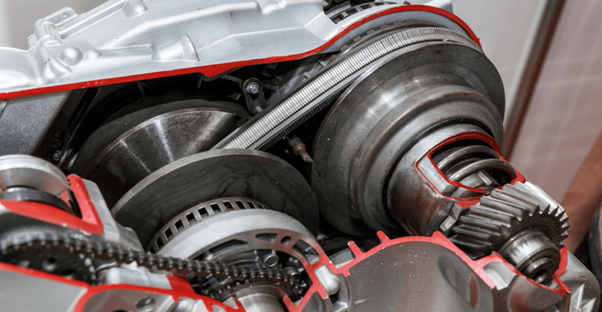A Guide to Proper Maintenance for Your Car's CVT Transmission

Transmissions are a critical component of any vehicle, responsible for transferring power from the engine to the wheels. They play a crucial role in controlling the speed and torque of the wheels, allowing the vehicle to move forward or backward at varying speeds. In traditional automatic transmissions, a set of gears with fixed ratios determines how power is delivered to the wheels.
Your car's continuously variable transmission (CVT) operates differently from a conventional automatic gearbox, offering various advantages and some unique maintenance needs. Read on and explore the benefits and drawbacks of CVTs, as well as essential care tips to ensure your CVT functions efficiently for years to come.
What are the Advantages of a CVT?
CVTs come with several advantages compared with a conventional automatic gearbox and those are:
Lightweight and Compact
CVTs are lighter and more compact than regular automatic transmissions, contributing to improved fuel efficiency and space utilization.
Fewer Moving Parts
CVTs have fewer moving parts, reducing the potential for mechanical failures and simplifying maintenance.
Better Fuel Economy
CVTs optimize engine performance by constantly adjusting gear ratios, resulting in better fuel economy and smoother driving.
Smooth Operation
CVTs provide a seamless driving experience with minimal "shift shock" compared to traditional automatic transmissions.
Improved Acceleration
CVTs offer faster acceleration and smoother operation, particularly on inclined roads.
What are the Disadvantages of a CVT?
While CVTs offer numerous benefits, they do have some drawbacks:
Noise Under Heavy Acceleration
Some CVT-equipped vehicles may produce a loud, droning noise during heavy acceleration, which some drivers find less appealing.
Lack of Physical Gear Ratios
CVTs lack physical gear ratios, making them less engaging for drivers who enjoy the feel of traditional transmissions.
Repair Costs
Repairing or replacing a CVT can be more expensive than conventional transmissions due to their complexity.
How do you take care of a CVT Car?
To ensure the longevity and optimal performance of your CVT, follow these maintenance tips:
Use the Correct CVT Fluid
CVT fluid is different from automatic transmission fluid (ATF) and is designed to maintain proper friction for CVT operation. Consult your owner's manual to determine the correct type of CVT fluid for your vehicle.
Periodic Fluid Replacement
Regularly replace the CVT fluid based on the maintenance interval recommended in your owner's manual. This practice will extend your CVT's lifespan and maintain its efficiency.
Check the CVT Dipstick
If your vehicle has a CVT dipstick, regularly inspect the fluid's condition. Dark brown, black, or burnt-smelling fluid indicates the need for an immediate replacement.
Avoid Heavy Towing
Limit heavy towing with your CVT-equipped vehicle, as towing can subject the transmission to excessive stress and potential overheating.
Gentle Acceleration
While CVTs can handle aggressive driving, lighter pedal inputs not only save fuel but also contribute to the CVT's long-term durability.
In conclusion, proper maintenance is essential to maximize the benefits of your car's CVT transmission. Regular fluid changes, cautious driving habits, and prompt attention to any unusual symptoms will help ensure your CVT operates smoothly and remains reliable throughout its lifespan. Should you encounter any issues, consult a qualified mechanic for a thorough diagnosis and repair.